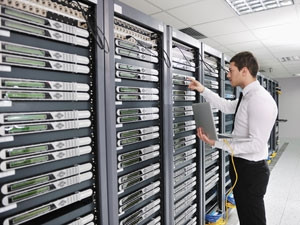
Modular data centres cost as much as 14% less to deploy than traditional 'brick-and-mortar' data centres.
This is according to recent research by DCD Intelligence, a division of DatacenterDynamics, which found that the industry could be wasting much-needed capital on data centre deployment.
According to DCD Intelligence, there is a lack of clarity when it comes to the comparative cost of traditional versus modular data centres.
In the research, a modular data centre is defined as a design based on prefabricated, pretested modules that are assembled in a custom-configured manner to form a complete solution, ideally defined by software. The research also stated that modular data centres continue to grow in popularity, particularly in France, the UK and the US, and in emerging markets such as Russia, Brazil, India and China.
The research found that the greater density and more efficient use of space means modular facilities are able to achieve more efficient power usage than traditional data centres.
Not all about cost savings
Chris Drake, lead analyst at DCD Intelligence, points out that assuming a modular approach will always offer significant cost savings is incorrect.
"It is important to recognise that there are a vast number of modular products available, not all of which offer the same standards and certifications and levels of support to end-users," comments Drake. "This paper offers the first real cost comparison of modular versus traditional build. But, as with any market, the potential savings will vary depending on the particular modular solution chosen."
DCD Intelligence explains that, when evaluating the wide range of modular and traditional data centre deployment options available, it is important to consider the range of costs associated with the entire life cycle of a data centre - from planning and design, through to retirement.
A total cost of ownership approach to understanding the relative cost advantages of modular facilities over traditional alternatives needs to take into account both direct and indirect costs, the company notes. Direct costs include the design, procurement and deployment of data centre equipment, as well as the costs involved in powering, staffing and maintaining the data centre.
By contrast, indirect costs include those accumulated due to complications, unforeseen events and unanticipated problems.
To conclude, Drake believes there are many factors to consider when assessing the cost of deploying a data centre.
"This is true of both modular and traditional data centre facilities. Data provided by a small sample of data centre technology providers and end-users suggests cost savings can be achieved when a modular build is opted for, with one of the main contributors being the shorter timeframes and less complex processes that are involved in installing and commissioning a new data centre," he said.
"The other main source of cost savings to modular data centre operators is the enhanced energy efficiency that modular technology is able to achieve compared with many traditional data centres."